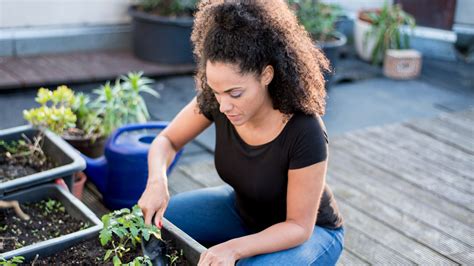Maximizing Your Balcony Garden: Strategies for a Thriving Urban Oasis
Balcony gardening offers city dwellers a unique opportunity to cultivate their own food, even in limited spaces. Whether you’re looking to grow fresh herbs, vegetables, or flowers, with careful planning, you can maximize your harvest and enjoy the benefits of sustainable living. This guide will walk you through the essential steps, from plant selection and container choices to seasonal adjustments and practical gardening tips, ensuring your balcony garden thrives all year long.
Key Concepts in Balcony Gardening
Balcony gardening, especially in urban settings, requires a strategic approach to ensure that you make the most of your available space. Here are some of the core concepts:
- Container Gardening: The method of growing plants in containers, which is ideal for small spaces like balconies.
- Vertical Gardening: Using walls, railings, and other vertical structures to grow plants upwards, increasing space efficiency.
- Plant Selection: Choosing the right plants based on your climate, available sunlight, and the space you have.
- Soil Health: Using quality soil and regular fertilization to ensure your plants grow strong and healthy.
- Watering Systems: Balancing your watering to meet the needs of container-grown plants while preventing root rot.
Historical Context of Urban and Balcony Gardening
Urban gardening has deep historical roots, dating back to ancient civilizations like Babylon, where rooftop gardens were used to beautify cities and grow food. Over time, as cities grew and outdoor space shrank, the tradition of balcony and rooftop gardening evolved, becoming a symbol of sustainable living. In the 20th century, with the rise of industrialization, urban gardening saw a decline, but the recent focus on sustainability and self-sufficiency has led to a resurgence in balcony and container gardening.
Current State of Balcony Gardening
Balcony gardening is no longer just a hobby for plant lovers; it’s become an essential component of sustainable urban living. As more people move to cities and seek ways to contribute to food production while minimizing their environmental footprint, balcony gardens provide an accessible solution. Recent advancements in gardening tools, such as self-watering containers and vertical garden structures, have made it easier to maintain a balcony garden, even for beginners.
Practical Applications for Maximum Harvest
To achieve the best results in balcony gardening, there are several key strategies that can ensure you’re maximizing your harvest:
- Maximizing Sunlight Exposure: Identify the sunniest areas of your balcony and prioritize sun-loving crops like tomatoes, peppers, and herbs.
- Utilizing Vertical Space: Use hanging pots, trellises, and vertical shelves to grow plants like peas, beans, and cucumbers upward.
- Container Selection: Ensure that your containers have adequate drainage, are the appropriate size for your plants, and are placed on stable surfaces.
- Soil and Fertilization: Use high-quality potting mix designed for container plants and add compost or organic fertilizer regularly to replenish nutrients.
- Watering: Consistent watering is crucial for container plants. Consider drip irrigation or self-watering pots to prevent water stress.
Case Studies: Successful Balcony Gardens
| Case Study | Approach | Harvest Yield | Key Success Factors |
|---|---|---|---|
| Small Urban Balcony in New York | Vertical garden using trellises for tomatoes and cucumbers | 50 lbs of produce per year | Maximized sunlight exposure and used high-yielding plant varieties |
| Large Balcony in Los Angeles | Raised containers with automatic watering system | 80 lbs of produce per year | Efficient water usage and diverse plant selection |
| Shared Balcony in Berlin | Community garden with shared crops like lettuce, herbs, and beans | 35 lbs of produce per year | Collaborative efforts and regular maintenance by participants |
Stakeholder Analysis
Several stakeholders benefit from the success of balcony gardens:
- Urban Gardeners: Individuals who want to grow their own food and reduce their reliance on store-bought produce.
- Local Communities: Balcony gardens contribute to local food production and create a sense of community among neighbors.
- Environmentalists: Advocates of sustainable living see balcony gardening as a step towards reducing urban carbon footprints.
- Governments: Urban governments can support balcony gardening by offering grants and incentives for green spaces.
Implementation Guidelines for Balcony Gardens
Starting a balcony garden requires careful planning and execution. Follow these steps to ensure a smooth setup:
- Assess Your Space: Measure your balcony and identify the sunniest spots.
- Select Plants: Choose plants that suit your climate and balcony conditions. Consider a mix of vegetables, herbs, and flowers to diversify your harvest.
- Prepare Containers: Choose pots and containers with adequate drainage and appropriate sizes for your plants. Don’t forget to add saucers to catch excess water.
- Prepare Soil: Use a high-quality, well-draining potting mix, and refresh the soil each growing season to maintain fertility.
- Plan for Watering: Implement an efficient watering system. Self-watering containers are a great choice for busy gardeners.
Ethical Considerations in Balcony Gardening
Urban gardening raises several ethical considerations, including:
- Resource Allocation: Water and soil are precious resources, especially in urban environments. Balcony gardeners must use these resources responsibly.
- Equity in Access: Not all urban residents have access to balconies or gardening spaces, highlighting disparities in green space availability.
- Pesticide Use: Ethical balcony gardeners should avoid harmful chemicals and opt for organic alternatives.
Limitations and Future Research
Balcony gardening has certain limitations, including the size of the space, the need for regular maintenance, and potential climate restrictions. Future research could focus on improving container garden technology, such as automated irrigation systems and pest control methods tailored for small spaces. Additionally, studying the psychological and community impacts of balcony gardening could provide insight into its broader benefits.
Expert Commentary
Experts agree that balcony gardening has the potential to revolutionize urban living. “It’s not just about growing food; it’s about fostering a connection to nature,” says Dr. Emily Turner, a leading urban gardening advocate. “Balcony gardens help people take control of their food sources while also promoting sustainability and well-being.” As more urban dwellers turn to container gardening, the trend is expected to continue growing, contributing to a greener, healthier world.


